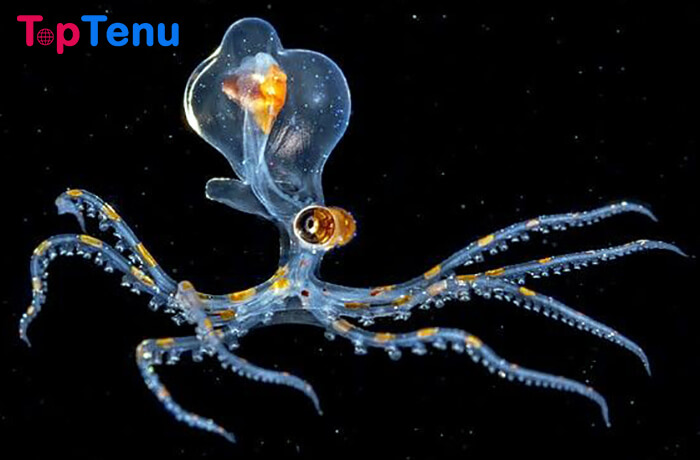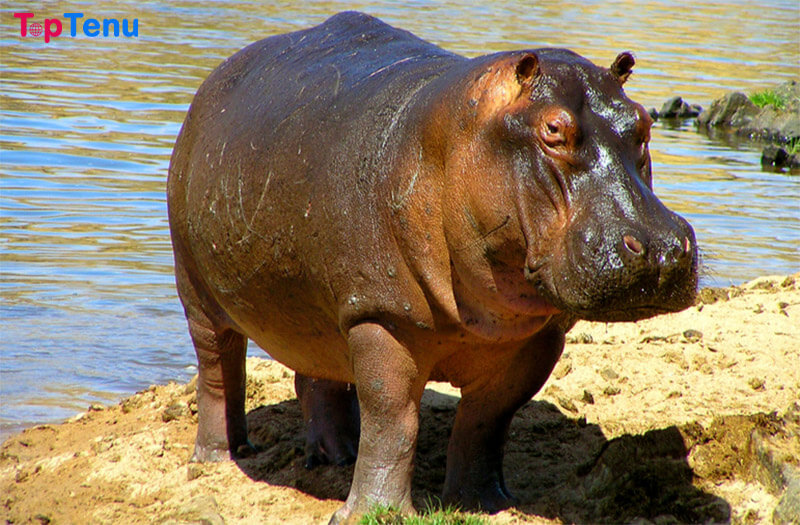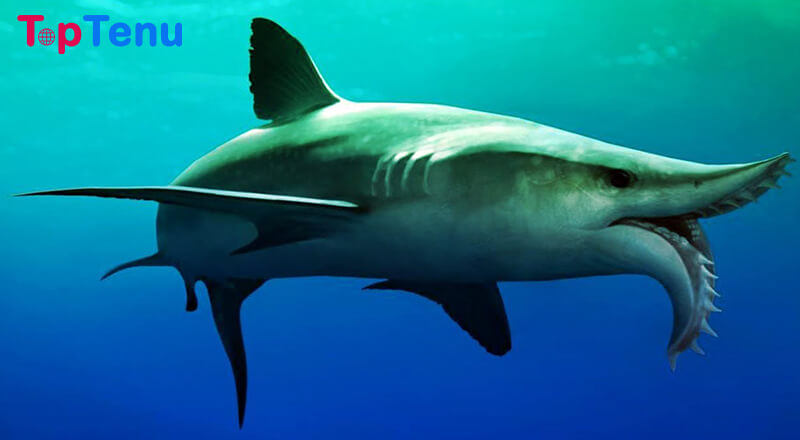9 of the Longest Living Sea Creatures
Could humans one day live forever? These marine species could hold the secret to immortality. Here are 9 of the longest living sea creatures:
1. Rougheye Rockfish
The rougheye rockfish got its name because of the ten spines found on the lower rim of its eye. It is also known as the blackthroat rockfish or the blacktip rockfish, and it is difficult to distinguish from its close cousin, the (short raker) Shortraker rockfish. It can reach a maximum size of 37 inches long and weighs up to 14 pounds.
The species can be found at depths between 550 and 2,100 feet, in the North Pacific and along the coast of Japan to the (nava-rin) Navarin Canyon in the Bering Sea, down the North American coast to southern California.
The rougheye rockfish is especially known for having an extremely long lifespan, as it can live as long as 205 years. The species is slow growing and matures only late in life. The primary threat for the rougheye fish is overfishing.
It is affected by both trawl and hook and line fishing, because it lives on the ocean floor. It feeds on other fish, crabs, shrimps, and amphipods. It reproduces by laying eggs with little or no other embryonic development within the mother, and spawns between February and June or between October and January.
2. Bowhead whale
The Bowhead whale is known for having the largest mouth of any animal. The species can weigh from 75 to over a 100 tones and can grow up to 60 feet long. It lives in fertile Arctic and sub-Arctic waters and is the only baleen whale to spend its entire life there.
The bowhead whale has been known to have an impressive life span of over 200 years. The oldest specimen found was caught in May 2007 off the Alaskan coast with the head of an explosive harpoon embedded under its neck blubber. It was estimated to be 211 years old at the time.
The arrow-shaped projectile was discovered by manufactured around the year 1890, which led scientists to believe that the whale had survived a similar hunt more than a century before. The bowhead whale feeds by swimming forward and opening its mouth.
The water is filtered through fine hairs of keratin placed on its hundreds of overlapping baleen plates. The prey is trapped inside, near the tongue, and then swallowed.
As for reproduction, the whale’s sexual activity occurs from March through August, between pairs and in groups of several males and one or two females. The females produce a calf once every three to four years, as the gestation period takes 13-14 months.
A newborn calf weighs about 2,200 pounds and measures 12 to 14 feet. In order to survive in very cold water, it is born with a layer of blubber, and within 30 minutes of birth, it is able to swim on its own.
3. The Greenland Shark
The Greenland shark is also known as the gurry shark or the grey shark and it has the longest lifespan of all vertebrate species. It has been known to reach over 200 years in its lifetime, but new studies found it can get anywhere between 272 and 512 years old.
The Greenland shark is one of the largest species of shark and can grow to 24 feet long and 3,000 pounds. It lives in the deep waters of the North Atlantic Ocean and the Arctic Ocean.
Because of his habitat, as an adaptation, the gurry shark has a high concentration of toxins in its tissues, making its meat toxic. Cooks in Iceland treat its flesh with a particular fermentation process and hang it to dry for about five months in order to reduce toxin levels, and is served as a delicacy.
If it’s consumed raw or improperly cooked, it can produce effects similar to extreme drunkenness. As for its own diet, the Greenland shark is an apex predator meaning that it’s at the top of the food chain and feeds with other fish, like smaller sharks, skates, eels, herring or redfish.
Some specimens were found to have remains of polar bears, horses and even reindeer in their stomachs. This shark has a very low swim speed for its size, as it usually swims up to 1 mph, and its fastest cruising speed reaches only 1.6 mph.
It has never been observed hunting, but scientists think it may ambush its prey when it is sleeping. As for its reproduction, the Greenland shark female does not deposit eggs in the ocean-floor, but it retains the developing embryos within its body, so they are born alive after the gestation period.
4. Quahog clam
The quahog clam is a species of edible clam, native to the North Atlantic Ocean. Globally, it may be found in the North Sea, the Faeroe Islands, or the White Sea. It is usually harvested as a food source, but if never harvested, a specimen can live for hundreds of years.
One of the oldest individuals, named Ming the clam after the Ming dynasty during which it was born, died in 2006 at 507 years old, after it was collected alive by an expedition and dredged off the coast of Iceland. It is unknown how long it could have lived, had it not been taken out of the ocean. Another long-lived specimen was previously collected in 1868 near Iceland, and was 374 years old.
Arctica islandica, as its name suggests, resembles a quahog, and may grow to sizes exceeding 50 mm shell height and up to 5 inches in length.
This species is the last surviving of it’s, a family that dates back to the Jurassic Era.
5. Antarctic sponge
An Antarctic sponge was found to have a very long lifespan, due to the fact that it grows extremely slowly in low temperature.
As its name suggests, this sponge is found in the Antarctic Ocean, but some specimens were also found in the Ross Sea and the Scotia Sea.
Scientists estimate that it can live for centuries, as one individual was found to be over 1,550 years old. Researchers came to this conclusion after using its metabolic rate and oxygen consumption as an approximate measurement.
The Anartic Sponge is a suspension feeder, and is usually preyed on by starfish. However, the sponge has spicules that can act as a defense mechanism against predators and prolong its life.
Their life cycle begins as a zygote, which develops into a free-swimming larva, and lastly settles down and grows into a young sponge.
6. Giant barrel sponge
The Giant Barrel Sponge is the largest species of sponge found on Caribbean coral reefs and it can reach a diameter of 6 feet long.
This sponge is usually found in deep water, throughout the Caribbean Sea, Bermuda, the Bahamas, hard-bottom areas of Florida and the Gulf of Mexico.
Some of the specimens found in the Caribbean Sea by scientist are over 2,300 years old. The Giant Barrel Sponge is typically brownish-red to rose-purple or gray, has a hard texture and can grow on any hard surface.
It feeds by continually pumping water into the sides of the sponge, through the sponge body. This process sucks microscopic bacteria into the channels, which then engulf them and extract their nutrients.
The sponge may also absorb dissolved organic compounds directly from the seawater. It multiplies by spawning its sperm or eggs directly into the water column, where fertilization occurs. This can happen at any time of the year, but especially when many specimens may participate at the same time.
The resulting sponge larvae are taken away with the ocean currents.
7. Black coral
Black Coral is a recently discovered species that can live over 4,000 years. It lives at depths of 1,000 to 1,600 feet in protected waters of the Hawaiian Islands.
The Black Coral has a tree-like structure and appears golden brown in color. The species was discovered in 2015 by a group of scientists at the Office of National Marine Sanctuaries and the Smithsonian Natural Museum of Natural History.
As the coral resembles the structure of a tree, scientists found that this coral also has growth rings showing how long it lived. In order to determine the age of the specimens, previous studies used high-resolution radiocarbon measurements on the growth rings.
Black Coral is the longest-lived marine organism known to date, which explains the name “annosa” (anu su), which means long-lived. This species of coral has skeletal spines that are often multi-lobed and usually grow up to 75 micrometers tall, but range between 30–225 micrometers.
It is found in 3 foot (or more) tall colonies with thick bright orange branches.
8. Monorhaphis chuni
Monorhaphis chuni is a deep sea sponge known for creating a single giant basal spicule that can reach lengths of 9 feet long.
It is usually found in the Western Central Pacific, in the waters of Philippines and Indonesia. However, some specimens were also found in the East China Sea, or Tanzania, and Somalian waters.
A study in the journal Aging Research Reviews revealed that a sponge species from the Monorhaphis chuni may live to be 11,000 years old.
It begins life as a zygote that develops into a free-swimming larva and then it settles down on a substrate where it grows into a young sponge.
9. Immortal jellyfish
The Immortal Jellyfish is a biologically immortal species of jellyfish. After reaching sexual maturity as a solitary individual, it can revert completely to a sexually immature colonial stage. The creature only reaches small sizes, with a maximum diameter of 4.5 millimeters, and is usually found in the waters of Japan and in the Mediterranean Sea.
Its life begins as a larvae, and while at first it is a free-swimming organism, as it settles down and becomes sexually mature, the Immortal Jellyfish gives a rise to a colony of polyps that are attached to the sea-floor.
A professor at Kyoto University, named Shin Kubota, managed to keep and observe a colony of the immortal jellyfish for a very long period of time. Kubota discovered that during a two-year period, the colony rebirthed itself eleven times.
However, although it cannot die from natural causes, as it can transform back into polyps, the jellyfish is not exactly immortal. Most of the Immortal Jellyfish are exposed to be eaten by predators and some of them die from disease as they reach the adult stage.
It was only named “The immortal jellyfish” because, theoretically, the process of the mature medusa reverting to the polyp stage can go on indefinitely.




